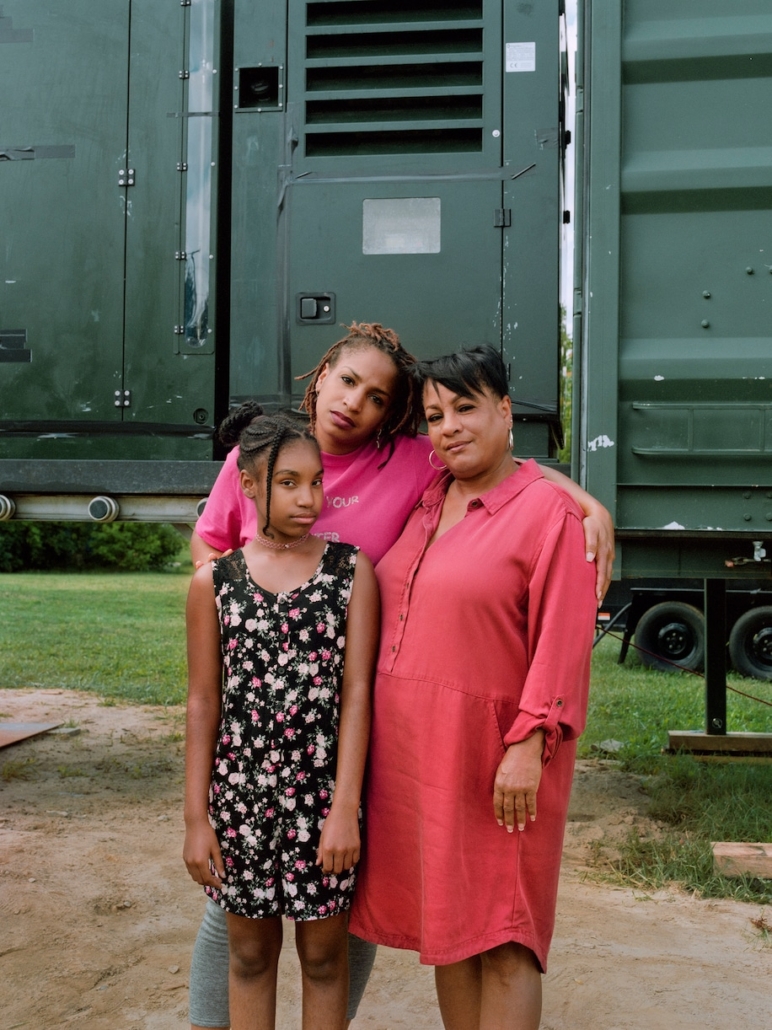Social Agitators, Joyfully Black: the artistic heirs of Gordon Parks
The Washington Post
By Robin Givhan
PLEASANTVILLE, N.Y.
The meditative and affecting art installation in the modest gallery in the unremarkable building includes portraits of a community in crisis but one that’s also defined by determination and care. It’s a photographic story about lead-laced water in Flint, Mich. — a catastrophe unleashed in 2014 by officials who stubbornly and cavalierly ignored the will and the well-being of the people they were sworn to serve. The exhibition unfolds mostly from the point of view of Black women, and one of the most moving portraits is of three generations of them. Shea Cobb, in a cheerful pink T-shirt, stands between her daughter Zion and her mother, Renée. Cobb’s left arm is wrapped around her mother in a protective gesture underscoring how, over time, roles reverse; now she’s in charge of keeping her elder safe. Cobb’s other hand rests on Zion’s back as if she’s silently reassuring her daughter that she’s there to catch her if she should stumble while also encouraging her to stand on her own.

The women in the picture aren’t smiling, but they don’t look angry or sad, either. Their expressions are more complicated than that, even young Zion’s. The women look inquisitive, as if they’re asking the viewer: What more could anyone want from us? Zion, whom artist LaToya Ruby Frazier captured from age 8 to 13, appears a bit suspicious or, at least, doubtful. Perhaps she already has witnessed the foolishness of adults too many times to count. The threesome stand in front of an atmospheric water generator, a truck-size example of industrial sorcery that extracts potable water from the air.
The portrait tells the story of Flint with understanding and dignity, without transforming the city’s residents into pathology, statistics, victims or martyrs. It speaks of a community that has grabbed hold of its destiny, even if its grip is tenuous. This picture, in all its simple complexity, was made by Frazier and is from her multimedia project “Flint is Family in Three Acts.”
“There has to be a deep empathy. There’s a need to be compassionate and [to] want to really, truly see someone’s humanity when they’re at their lowest,” Frazier says of her work with Flint residents. “To exalt them and lift them up and honor them. … And Black women’s lives, our perspectives, our voices and our stories are not valued or honored to the greatness that they deserve.”
Frazier’s project is on view until June 24 in a gallery attached to the Gordon Parks Foundation, and the photographs are, in many ways, part of its namesake’s legacy. Located in Westchester County, the foundation is more than an hour away from Manhattan’s art-dense Chelsea neighborhood and miles away from the rich history of Harlem, where Parks, a world-class, barrier-breaking photographer, created some of his most influential work. Nonetheless, his legacy is centered here, in this modest business district of two- and three-story buildings and lush flowering trees. From this space, his influence extends wide.
Courtesy of: The Washington Post

